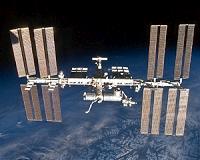 |
El Segundo CA (SPX) Apr 04, 2011 A Reentry Breakup Recorder (REBR) carried aboard the Japanese HTV2 vehicle during its fiery plunge into the South Pacific Ocean successfully collected data during the breakup of the HTV2 vehicle and "phoned home" that data as it fell into the ocean Tuesday evening. The REBR, an instrument designed and constructed by engineers at The Aerospace Corporation, survived impact and continued to transmit data from the ocean. Analysis of the data will take six to eight weeks. The REBR is a small autonomous device that is designed to record temperature, acceleration, rotation rate, and other data as a spacecraft reenters Earth's atmosphere. The Aerospace Corporation designed REBR to collect data during atmospheric reentries of space hardware in order to help understand breakup and increase the safety of such reentries. The REBR project was supported by the U.S. Air Force, NASA, and the Boeing Company. The first flight test of the small, autonomous device was coordinated by the Department of Defense's Space Test Program. A second REBR will reenter the atmosphere aboard the European ATV2 vehicle in early June.
Share This Article With Planet Earth
Related Links The Aerospace Corporation Station at NASA Station and More at Roscosmos S.P. Korolev RSC Energia Watch NASA TV via Space.TV Space Station News at Space-Travel.Com
 Station Fires Engines To Avoid Orbital Debris
Station Fires Engines To Avoid Orbital DebrisHouston TX (SPX) Apr 04, 2011 At 10:36 p.m. EDT, ground controllers moved the International Space Station away from a piece of orbital debris. The object is a relic from a collision between the COSMOS 2251 and Iridium 33 satellites in February 2009 and had been close to the station's orbit prior to the debris avoidance maneuver (DAM). The DAM, performed during the Expedition 27 crew sleep period, used thrusters from th ... read more |
|
| The content herein, unless otherwise known to be public domain, are Copyright 1995-2010 - SpaceDaily. AFP and UPI Wire Stories are copyright Agence France-Presse and United Press International. ESA Portal Reports are copyright European Space Agency. All NASA sourced material is public domain. Additional copyrights may apply in whole or part to other bona fide parties. Advertising does not imply endorsement,agreement or approval of any opinions, statements or information provided by SpaceDaily on any Web page published or hosted by SpaceDaily. Privacy Statement |